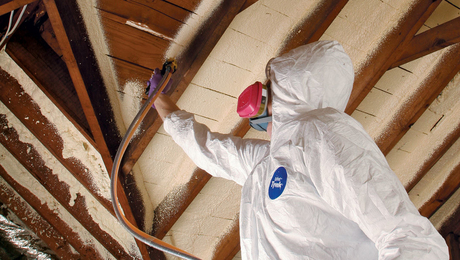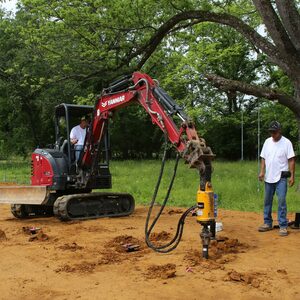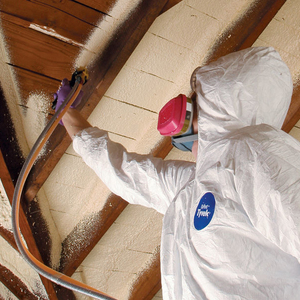NAILS VS SCREWS USED IN HURRICANE MITIGATION CLIPS
Hello,
For just Florida Hurricane only discussion: what screw is equivalent to whatever nail (#8 – 1.5″ nail) is used in the Hurricane Mitigation roof truss to wall single clip (just the 90 deg simple clip). ; I would think it would be just the same #8 – 1.5″: screw . Thanks.
Background : Rehabbing house and see opportunity to make it more hurricane durable. Hoping this would reduce insurance costs by adding clips now that walls are exposed and its easy to do. I want to use screws because we think they grip better and that they also are easier for tight spaces to use a power screwdriver versus a hammer.
Don’t talk about tornadoes please,,thanks.



















Replies
You would need to use the screws approved by the hardware manufacturer. Simpson has some screws that can be used in place of nails for many of their pieces.
Hmmmm...
Well actually others have said that florida has its own set of rules and that nails are the norm BUT we want to know if there is a screw equivalent, We don't know who the manufacturer is, we really are just asking if someone knows for sure and has done this before in florida for hurricane clips (using screws instead of nails and what is the equivalency type of screw to use). We called the supplier and all they knew was use nails or whatever builders plan calls for, but we are retrofitting.. so that doesn't help us know what screw is equivalent to the #8 nail.
You can't really
get the type of engineering advice and approval that you seem to want from anonymous sources on the internet. If you want a real answer to your question, you need to ask either the hardware manufacturer or a structural engineer.
For what it's worth, you could browse the Simpson catalog and see what type of values they give to nails vs. their SDS screws, just go get an idea.
Again: we are asking if anyone know for sure. thanks
Please, if anyone has already been thru this in FLORIDA (not anywhwere else; as FL has their own rules), please guide us, we don't need obvious redundant advice,thanks.
Why would you even want to use screws? If you're talking about retrofitting your entire house you're talking about many hundreds if not thousands of nails. The hurricane clips, straps, hangers, etc are all engineered for nails. Not just any nail but a code approved clip nail made for just for that purpose. Simpson does make some screws that can be used with some clips but they are certainly no easier to install than nails and way more expensive. If you're really doing your whole house buy a Bostick clip nail gun and go at it, you'll be time and money ahead. Regular screws can't be used at all.
Some screws can
Generally screws aren't code compliant unless the manufacturer has taken the time to have them certified, or a Licensed Desgin Professional authorizes the use of a specific product. Right now the only ones I know of that are certifed are the ones simpson is selling.
The problem of approving screws from the designer's perspective is: It requires them to put their license, and financial well being on the line, for a very low return. So, they are extremely hesitant to do it.
There are some form GRK, and a regional manufacturer, that I would probably approve. And, if I were doing the work for myself, I would just tell the local Inspector that I was going to use them, and he would make a note in his inspection file that I did.
Back to the OP's question: A #8 nail has a diameter of 0.131-inches. A #10 wood screw is slightly over that, and a #8 is slightly under that, varying by manufacturer. Simpson catalogs #9 screws that have a diameter of 0.131. The local one I have been bying mic out at 0.136.
The issue with screws versus the nails, is that the thread forming process can lead to embrittlement and hardening of the screw. This leaves the screw more susceptable to failure under shock loads than a nail. One of hte hesitations some people have against screws is that they have seen screws that failed, and blame the failure entirely on the increased brittleness.
Personally, I think that under similar loads, the nails would have failed in pull out. But the increased holding power of the screw leaves fracture as the only mode of failure. I have not seen any real lab generated data on the failure modes so, my opinion is just a highly educated guess.
Also, it is possible to over torque a screw so that you have stretched it far enough to weaken it. This is particularly easy with an impact driver, and torx heads. This damage is below the surface and very hard to detect. A nail on the other hand can only be damaged by bending, and it is pretty obvious to anyone who looks that the damage has been done. You can't do any damage by beating on the head of the nail that will effect either the pull out strength or the shear strength.
using screws for hurricane clips instead of nails
I am adding hurricane clips in the walk-in attic of a 1924 house that has been remodelled 5 years ago but the attic clips weren't installed. I don't want to hammer nails into 90 year old heart pine and risk cracking or damaging the lath and plaster walls and ceilings. I plan to pre-drill the 'rock hard' wood rafters and wall studs and use screws instead of nails. So, any knowledgeable advice on a proper screw to use?
Just read the rest of the thread. I will contact the home inspection service and our local building department for approval. Thanks.
Home inspectors and building officials will tell you the same thing. Use the screws specified by the maker of the clips. A clip nalier won't damage anything.
I guess I would wonder what weather you are expecting in the next 5-10 years you will likely own the home that the house hasn't seen in the last 94 years it has been standing.
Here are the specific screws you are looking for:
http://www.strongtie.com/products/connectors/screws-loadrated.asp
All the big box stores and builders stores carry them now. You have to match the screw (SD9 or SD10) to the specific hurricane clip you will be using - pick the clip then see which screw you need from their chart on tht page.
They really are a dream to drive - they use a 1/4" hex head, so with a magnetic bit they will stay in place in the driver while you manuver the clip into position.
As far as strength, Simpson has stated that the screws have been found to have MORE strength than the nails you would have ordinarily used.
Their ese of use does come at a premium though, as I've only seen them in small quantitly boxes so far of 100, priced at about ¢10 a piece.
If you have old dried woods (i.e. retrofitting) It's not a bad idea to have a compact drill handy with a 7/64" bit. Near the edges of some boards the grain might encourage the screw to dig in at an angle. Usually drilling just 3/8" will cut through enough grain to keep it perpendicular to the connector hardware.
Just to echo what you've been told already - You either use the screws the hardware manufacturer calls for, or you don't use screws.
Of course, since this is retrofit and not required by code the OP can use whatever he wants. But the ins co isn't going to count it for anything unless it's done to code.
RIght you are.
Thats why we are asking if anyone in FLorida has done this according code. (what screw is equivalent to the usual nail for hurricane clips ? )
It's almost like you're not reading the responses to your first post. So far everyone has told you the same thing. But just for the record, as my name indicates, I'm in florida and have been a builder here for 40 years.
The ONLY screws acceptable for use with hurricane clips are the screws specified by the clip manufacturer. They are engineered for use with clips. NO other screw can be used. In spite of anything you've seen on Holmes on Homes you can't just use any screws on your clips. Hurricane clips, hangers, anchors, primary purpose is to prevent uplift. Generally speaking nails have the shear strength to prevent uplift, screws don't. You could use 1/4" lag bolts rather than 10 penny nails and the inspector would fail your job. If you want to use screws you'll have to use screws made for that application or have an engineer approve the screws for that use.
The answer you got applies anywhere. The fact that you're in Florida is irrelevant.
It's simple - If the manufacturer doesn't approve the fastener it doesn't matter what anyone (Including you) thinks. Follow their specifications and you'll be fine.
just nail it
Bloody hell... just use nails! Grip isn't an issue.... shear is what the fastener in hurricane clips is all about. Buy a palm nailer for the tight space and go at it. Nailing is faster, better, and cheaper. Plus the tat, tat, tat from the palm nailer will annoy the neighbors.
Once you try a positive placement nail gun you will not even think about screws. That is what the guys here in Florida use with simpson clips. You just stick the pointer in the clip hole and pull the trigger. In one of those clips with a dozen or more nails it really makes a difference
More Hope if you Change
All things aside it would be NICE to make the house more resistant to hurricanes but using clips fastened with nails or screws really boils down to whether an insurance company thinks its worth it and charges lower premiums. A house in a flood zone is in that zone even if you surround it with levies so you need to buy homeowners insurance AND flood insurance. Take pics regardless to back up any claims. Chill out. Tough in Florida but maybe I can bottle up some Rocky Mountain air. Tyr.
Screws vs. nails
Most homes destroyed in hurricanes are taken out either by storm surge or by tornadoes within the storm. If either of these gets you, nails vs. screws will make little difference. Clips and straps mainly provide protection from uplift from uplift and depend on the shear resistance of the fastener. Once you are using the fasterner required by the clip manufactuor, I think the decision is based on your work methods and tools. Which one are you the most comfortable and efficient using?
Screws vs Nails
Well actually I think screws are much less likely to come out after days or week of hurrican buffeting (which loosens nails..)... so we always try to use screws but the question is then which grade type of screw (diam and strength, don't use drywall screws for these huricane clips), we were thinking as thick of a screw as they sell that will fit the hole in the hurrican clip would be overkill , but thats just insurance too !
We've told you what screws meet codes.
There is no screw option, but one certified by the connector manufacturer, or a licensed design professional, (Architect or Engineer).
Design professionals will not put their license, or errors and omissions insurance rates, at risk for the level of return involved in approving the screws. I specify Simpson connectors or approved equals, installed in conformance with the manufacturers installation instructions.
So far as I know, Simspon StrongTie is the only structural connector manufacturer that has designed and certified any type of screw for use with their connectors. The Simpson screws are not certifed for use with any other manufacturer's connectors.
You seem to be beating a dead horse: It won't change it's mind and run, no matter how many times you hit it.
This whole thread is like a conversation with my wife or my 4 year old. They ask a question. You give them the answer and they ask the question again! Finally, you just have to tell them to just do whatever they want to do just don't come crying to me when it doesn't work out....oh and don't get mad when I say I told you so.
Sounds like some old boomers on here still hung up on nails. If you're not in a hurricane zone with mandated requirements for "nails", then use a similar diameter screw. It holds MUCH better than a slick nail ever did.
", then use a similar diameter screw“
Shear strength is the decision maker, diameter means not much.
Using a screw to attach a stud to a plate gets you nothing except a bigger labor bill. We use nails for very practical and economic reasons. I've been a builder for 50 years and don't remember ever seeing a house that fell down because the nails failed.
Since this thread has been dug out of the depths of the cellar I'll add one thing keeping in mind that we are discussing a retrofit, not new construction. Generally, we do retrofits not to satisfy the building department but the homeowners' insurance company. Unlike the building inspectors, the insurance inspectors will crawl around in your attic checking your straps and looking for shiners. If we are reroofing the entire roof gets renailed using 8# ring shank nails. We remove the bottom row of plywood and on CBS house use the Simpson HGA10 clip with the supplied screws to connect the trusses to the tie beam. Those changes will get you a nice discount on your homeowners and in some cases stop insurance cancellations.